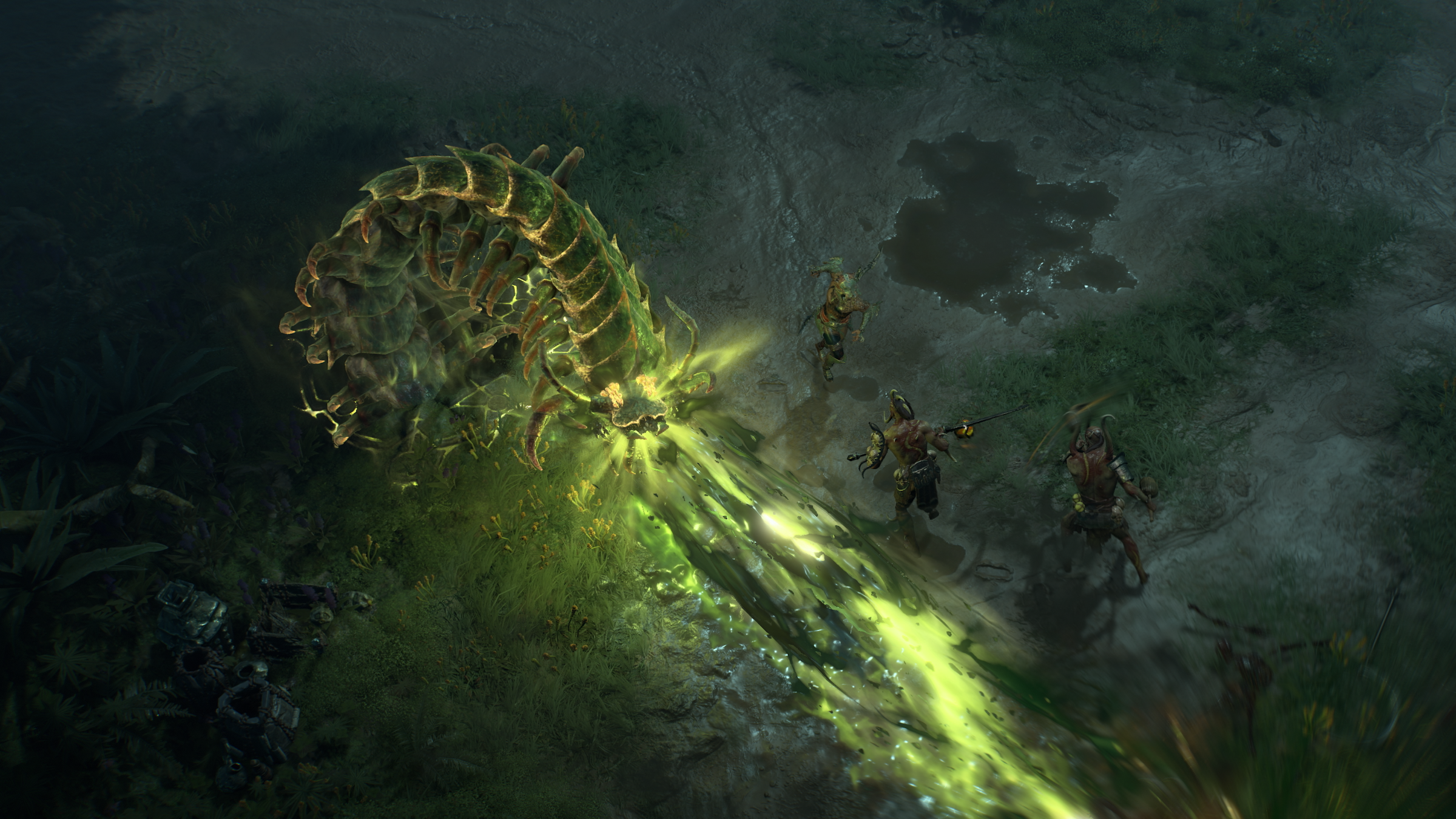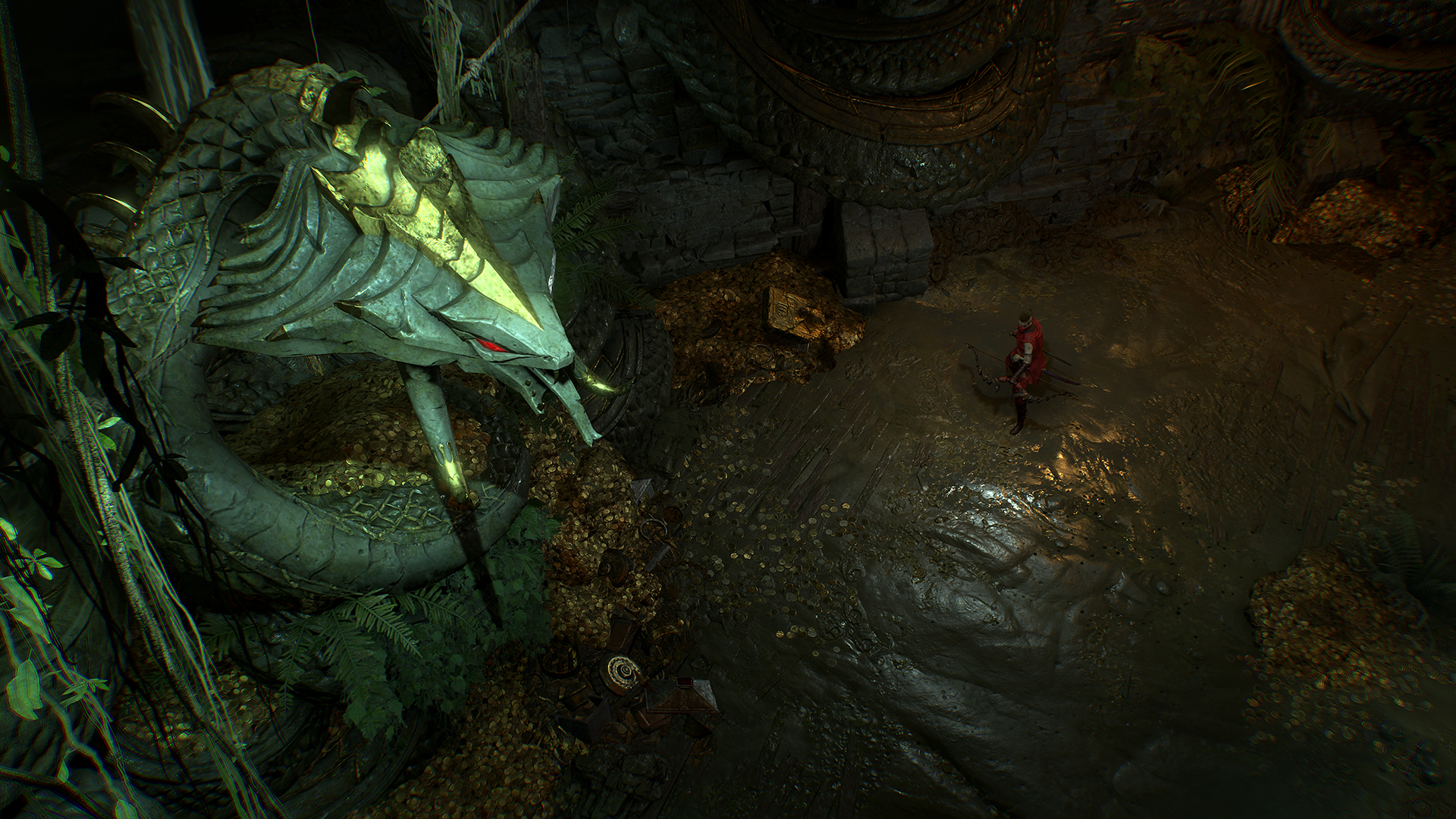Diablo 4: Vessel of Hatred is good, but it’s not Loot Reborn
Blizzard set – probably unintentionally, or perhaps just unavoidably – a kind of trap for itself and for Diablo 4‘s first expansion, Vessel of hatredwhen it released the game’s fourth season, titled Loot Reborn, earlier this year. Loot Reborn was excellent, with an emphasis on a much-needed overhaul of Diablo 4‘s item game. It immediately made the game feel new. But this posed an immediate challenge Vessel of hatred: Could it have the same impact and make the game feel new again a few months later?
That may be the definition of a good problem, but it’s still a problem. It is a problem that should be solved by sheer quantity stuff included in Vessel of hatredand what’s launching next: a new character class, a new map region, a new storyline, multiple new ways to customize your character, a few new styles of dungeon gameplay, revamped character progression, plus a new season (the game’s sixth) with its own tailor-made questline, features and game mechanics.
But…honestly, it’s still a bit of a problem. That instant, day-and-night feeling of refreshment you got when starting up Loot Reborn is not present in it Vessel of hatred. This expansion is more of a slow burn that is initially disappointing before gradually revealing many new pleasures to the player. The contrast with Loot Reborn is a compelling lesson in the difference in impact between design and content – or, to put it another way, between changes to the beating heart of a game and features that embellish and enrich it.
Vessel of hatred and the accompanying 2.0 update for the base game will change Diablo 4however, and above all for the better. Starting with the features that will be available for free to all players, there’s a major reorganization of how leveling and difficulty work, making Diablo 4 more in line with Diablo 3. The four world levels have been replaced with eight new difficulty levels: four normal levels and four levels of endgame Torment difficulty. Leveling has once again been split into your character’s main levels, which award skill points and are limited to level 60, and the end-game Paragon levels, which unlock additional bonuses on the Paragon boards. (Previously, Diablo 4 I merged these two leveling strands into one with a level 100 cap, but removing the distinction between them ended up not being very clear or helpful.)
This may all sound more complicated, but in practice the character progression is broken down in a way that is more detailed and useful, as well as easier to read. The game also feels like it’s been tuned to be more challenging overall for me, although that could be a result of certain progression bonuses not transferring from my account to the Vessel of hatred build example. (To play Diablo 4 having just four drinks is painful again, I can tell you.)
Vessel of hatred‘s main feature is the new character class, Spiritborn. These are agile melee fighters with a theme that seems inspired by Aztec warriors, who use glaives, quarterstaves or polearms and join animal spirit guardians with different skills: eagle (range attacks and movement), gorilla (defense and heavy melee attacks) , centipede (poison and crowd control effects), and jaguar (fast, aggressive melee attacks).
The best comparison is probably in previous Diablo games Diablo 3‘s Monk, a spectacularly fast magical martial arts fighter, a kind of Bruce Lee who can teleport. The Spiritborn initially feels more prosaic and less satisfying than the Monk, but if you spend time experimenting with the class you’ll find there’s a lot of depth to it. More than any other Diablo 4 class, save perhaps the Rogue, the Spiritborn feels like several different classes in one, with a huge variety of hybrids to discover and tinker with – something that’s emphasized in the Spirit Hall mechanic that lets you get bonuses from two of the spirit keepers can synthesize or can double one. I ended up with a gorilla-eagle hybrid, a durable brute that could still call upon some extra range and utility from the eagle toolkit. It feels like you can easily roll a new Spiritborn every season without running out of interesting variants to explore.
Meaningful diversity in character customization is very high Diablo 4‘s watchword – a bit at the expense of the distinct flavor of the classes and the impact of the item diminishes, but with a hefty compensation in terms of how customized and personal your character can feel. Vessel of hatred deepens this further with Mercenaries and Runewords, two new systems that both develop a kind of if-then programming language to plug into your builds.
Mercenaries are AI companions that fight alongside you, with their own progression and skill trees that can be developed to complement your playstyle. But the really interesting thing here is the second slot for a Reinforcement character, which can be set to enter battle with a specific effect when your character uses a certain ability, is injured, or takes a debuff. Similarly, Runewords are linked socket items that link a ‘Ritual’ condition – such as using a potion, dodging or casting an ultimate ability – to an ‘Invocation’ which can be a buff or a skill effect, even a skill from a different class altogether.
In between, Reinforcements and Runewords add a fascinating new set of tools for Diablo customization, almost like the macro commands you could use in old MMOs to trigger little chains of cause and effect with a single button press, or like the Gambit party programming system inside Final fantasy 12. It’s not pretend Diablo 4 is short on crafting and equipment systems to tinker with, but these add something genuinely new to the mix.
Elsewhere, variety comes in the form of new dungeon designs that meaningfully expand the endgame or add endgame-like play to the leveling experience. I didn’t get as far as the Dark Citadel with the preview build; this is a new co-op endgame dungeon that aims to replicate some of the refined multiplayer mechanics of MMO dungeons and raids within Diablo. But I’m a big fan of Kurast Undercity, a multi-level randomized crypt set beneath the ziggurats of the new zone’s capital Nahantu. This combines a ticking time limit with customizable modifiers for an exciting, fun and endlessly replayable end-game style dungeon experience that you can access as early as level 15. It’s a great way to level up characters once you get tired of playing campaign missions, or if the current season isn’t grabbing you.
About that campaign. Diablo 4The game’s campaign missions unfortunately remain the least rewarding and slowest way to play the game. Admittedly, I’ve never been one to play Diablo for the story. But despite the rich atmosphere of Nahantu’s jungle environment and a riveting encounter with Mephisto, the Lord of Hate, who begins to exert his influence from the Soul Stone in which he is trapped, Vessel of hatred‘s storyline doesn’t really go anywhere. The experience and loot rewards are relatively meager, and the quest design is uninspired – especially compared to the exciting variations on Diablo gameplay that the Blizzard team has come up with outside of the main mission, such as The Festering Dark, a pitch-black maze that must be explored and reclaimed with a lantern, or the Realmwalkers, a Season 6 event where gigantic, tank-like demons crawl across the map and leave chaos in their wake. The boss design is excellent and inventive everywhere you look in the game, including the campaign.
At first, Vessel of hatred can feel like it’s both too much and not enough: too many new systems in a game that’s already groaning under the weight of them less than 18 months into its life; not enough that is truly transformative. Give it a little time, though, and you’ll find a rich and rewarding variety of ways to progress and customize your ever-changing parade of destructive puppets. If the launch of Loot Reborn was the right time Diablo 4 then finally became great Vessel of hatred is condemned to simply be more Diablo 4. But something great can’t be that bad, right?


